Antarctica - Through the lens
Written by Dr Brian Harrisberg - Apr 17, 2020
Earlier this year I was lucky enough to visit Antarctica with Aurora Expeditions on their signature ship, the Greg Mortimer. A trip of a lifetime and a photographer’s dream; these are my photographic tips.
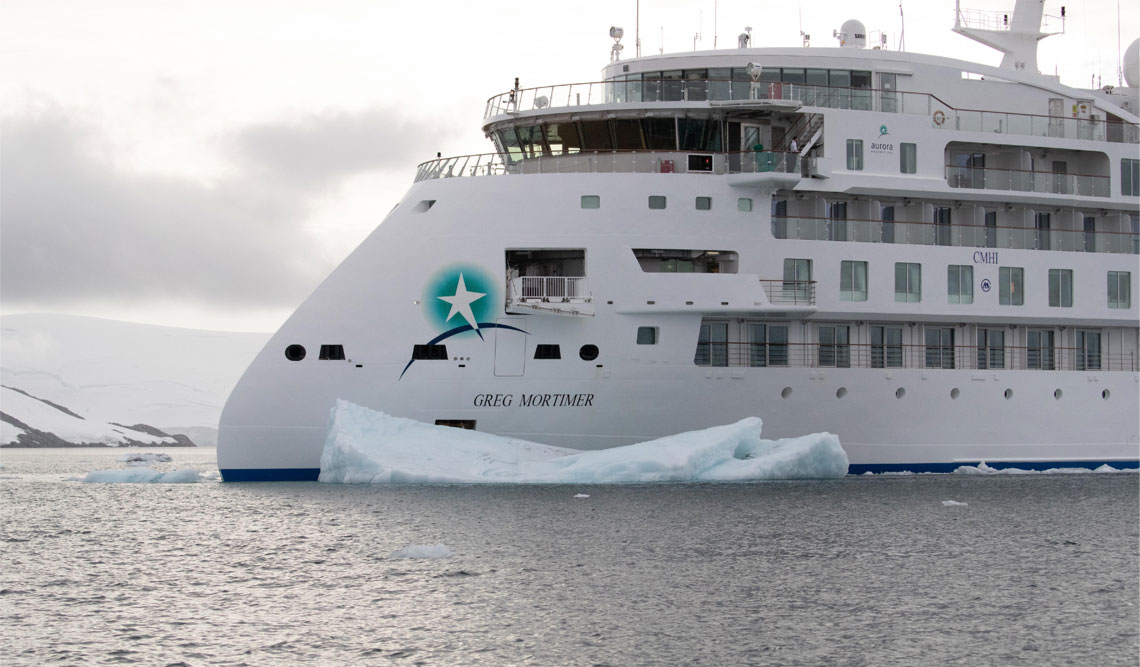
My ambition for my photographic journey on this trip was to enjoy the landscapes and the penguins; normally I am primarily a wildlife photographer with a special interest in birds. The gear I took with me included my Canon bodies 1DX MARK 2 and Canon 5D MARK 3, The lenses I took were my 16 to 35mm EF f 2.8 and 100mm to 400mm IS 2 f 4.5, which are also both Canon lenses. I left my 600mm f4.0 prime lens at home as it is unnecessary in this area. In addition, I had polarised filters and a complement of NISI graduated and ND filters together with a lens mount. The tripod was a light weighted GITZO limited edition and it worked brilliantly.
I wear a camera body strap to secure both cameras and brought a waterproof bag with extra equipment such as filters, batteries and tripod.
A typical day on the ship includes Zodiac safaris mornings and afternoons, with some landings for exploration. Getting in and out of these Zodiacs is certainly challenging and it is possible to get wet. Fortunately, we had great weather with some sunshine, and minimal rain and snow. Be prepared for all seasons at any time; wearing layering of clothing is essential. Gloves (even touch awareness) never worked and mostly I used my hands while photographing, and spent time recovering in the gloves when the pain in the fingers became unbearable. The light was favourable on occasions but, like I said to other photographers, “we have to chase the light and work with what we have been given”.
My landscapes were all taken with a tripod from the helm of the ship and, I always used polarised and graduated filters. The aim was to plan the composition and take multiple shots across the landscape which I stitched together in Lightroom using the Photo merge options. This worked particularly well, and the post processing was simple. An example of this was at our first landing on Peterman Island where the sun shone allowing an opportunity to use the bright sky over the bay.
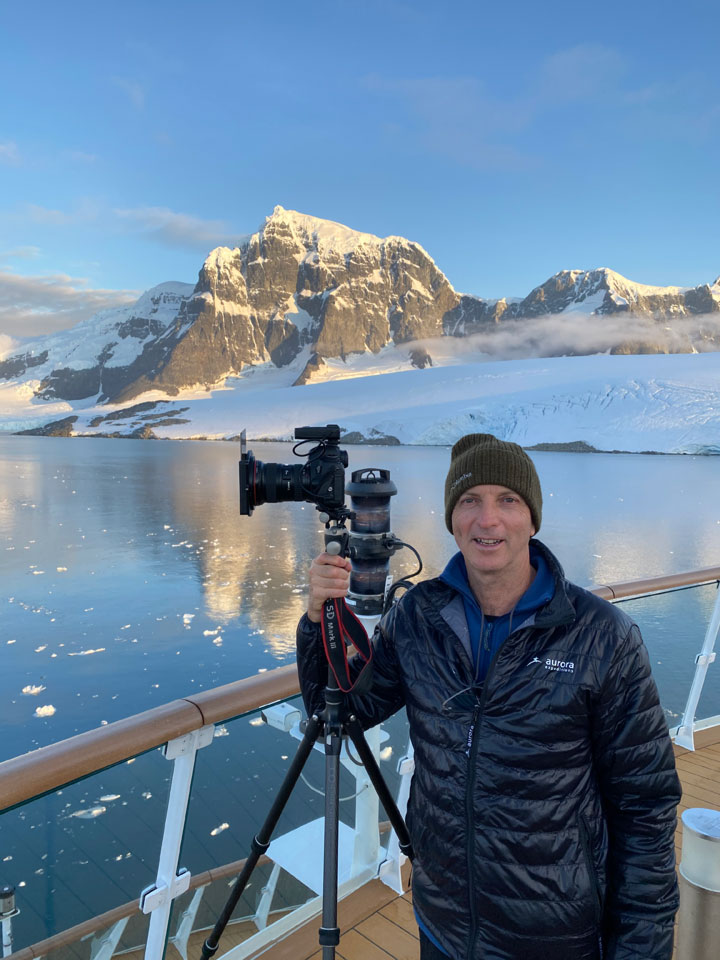
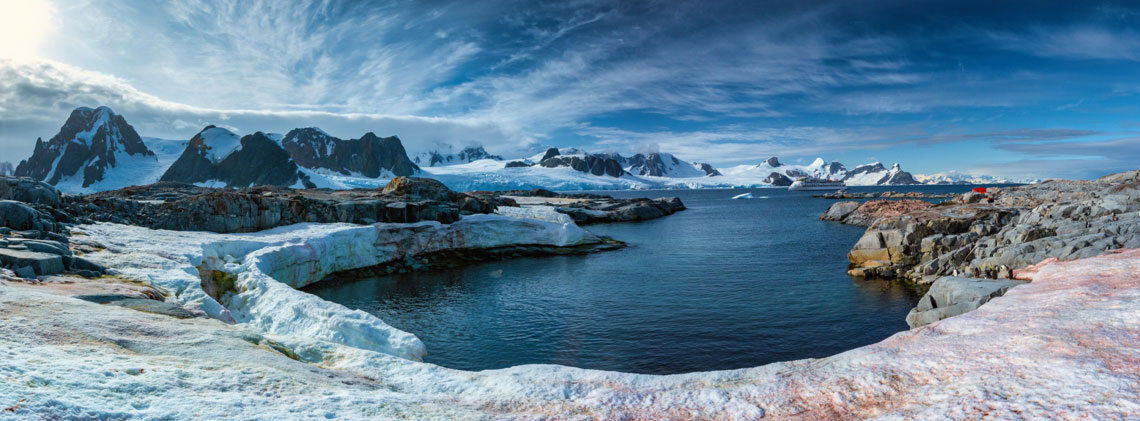
The wildlife is quite spectacular and easily accessible on the Zodiacs or on land. This can be called a cold safari. For those of you who have travelled to National parks around the world, this experience is very similar. Each day brings with it excitement and adventure; especially expecting the unexpected. The guides are extremely knowledgeable and make the experiences even more enjoyable. Hiking with the gear can be tricky, but I used the tripod as a stick to balance on rocks and ice. The penguins are truly adorable, with access to eye level achieved by crouching or lying down.
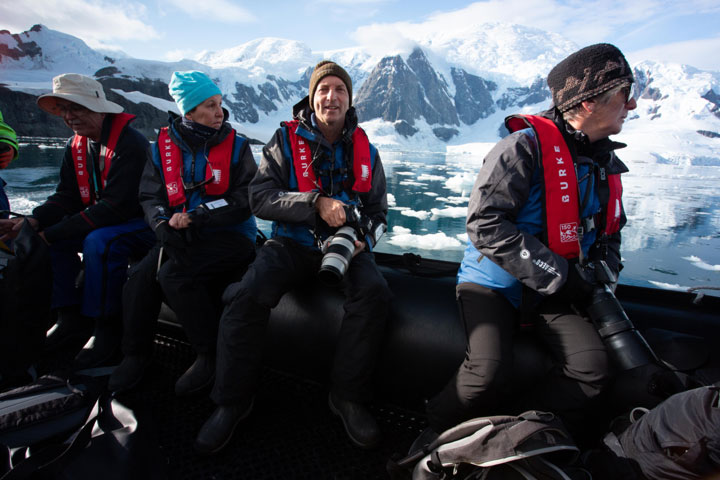
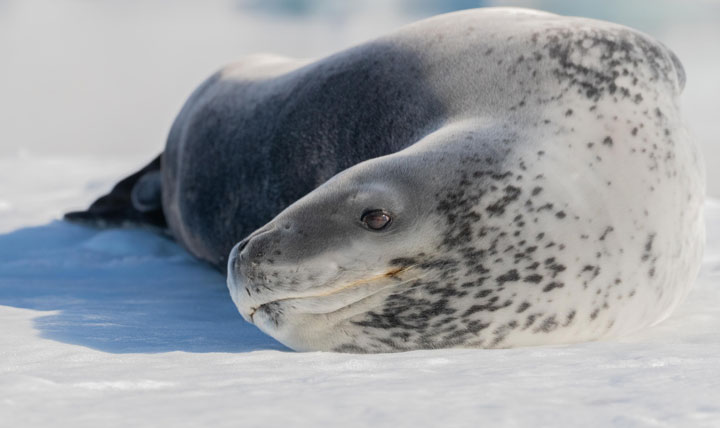
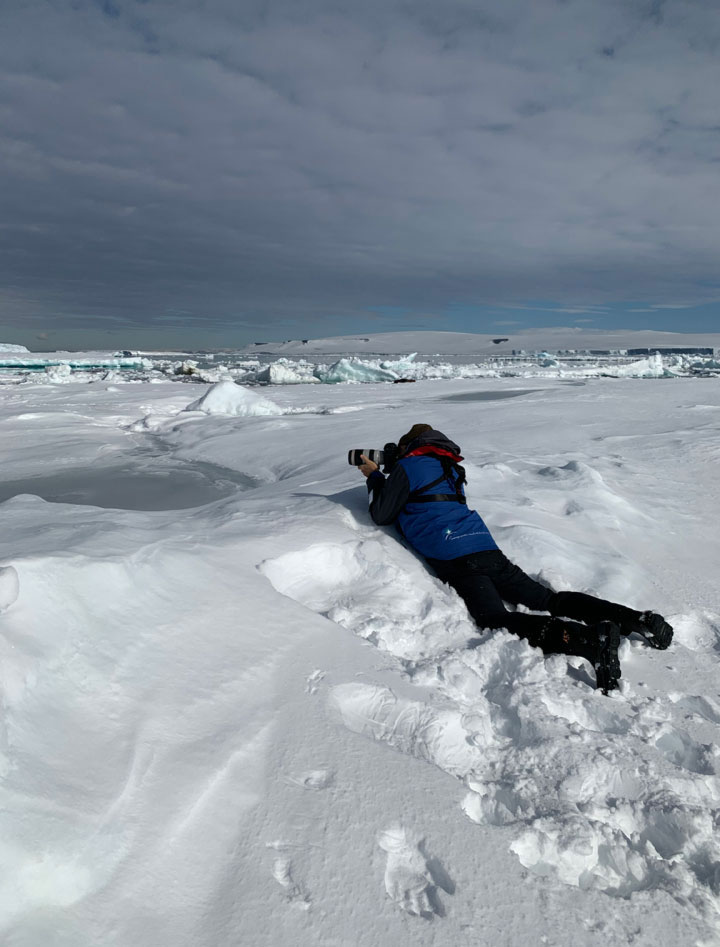
Porpoising penguins were my greatest wildlife challenge on this trip as their path and exit are unpredictable. Panning with the penguins and predicting their exit point works well in burst mode. Adjusting exposure compensation allows a shift of the histogram to the right. This will help with darker animals like penguins against the backdrop of the darker sea water. I recommend, and used aperture priority mode on the zodiacs, which helped enormously with the changing backgrounds from sky to sea.
The land animals and penguins are to be respected by adequate distancing and giving way if you cross paths with them. This is not difficult, but on occasions, the animals come up to you, which is certainly a bonus, to the point where I would use the wide-angle lens instead of the 100mm to 400mm lens. It is not uncommon for the penguins to come and peck your clothing as they are so inquisitive.
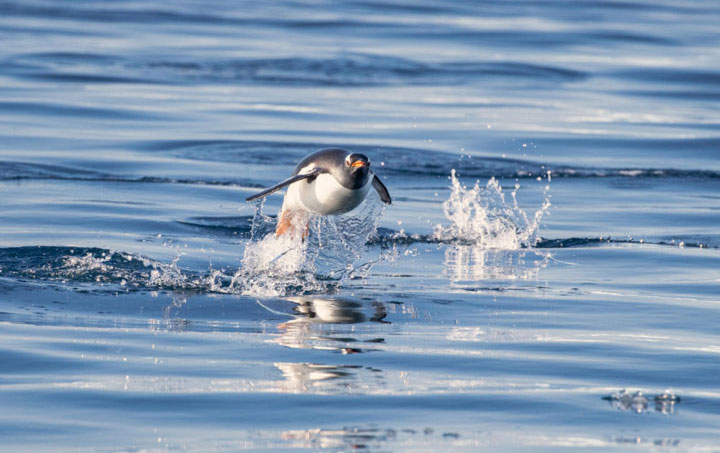
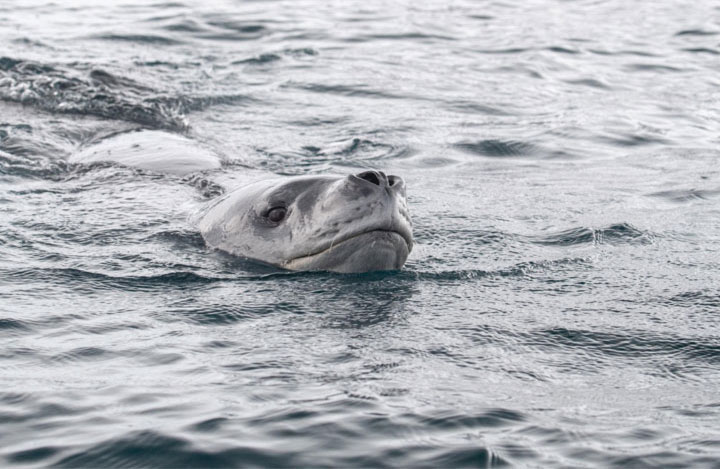
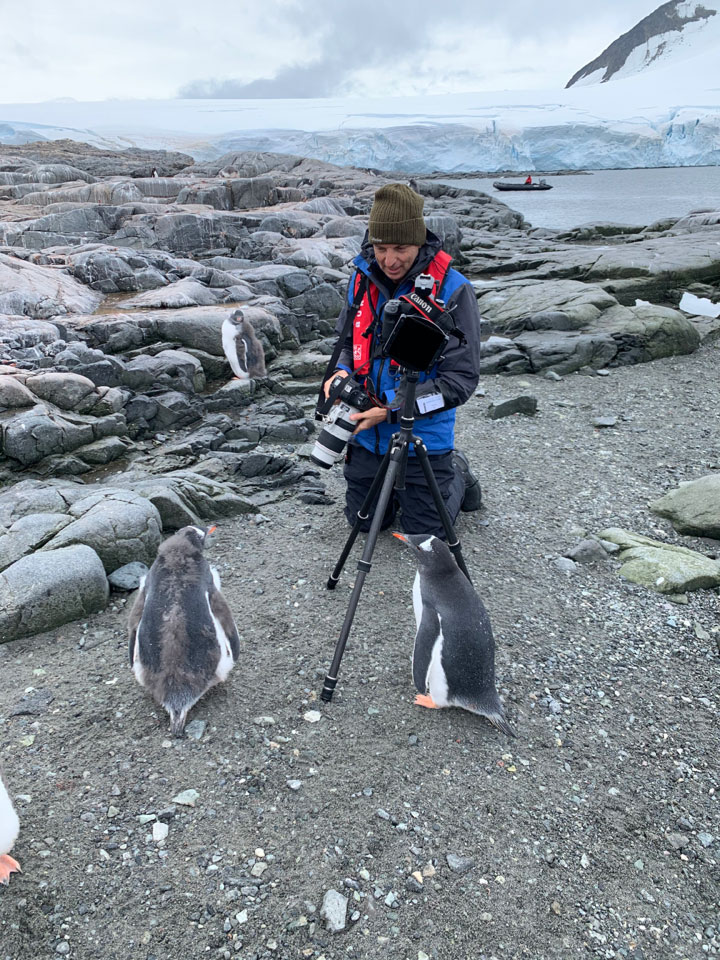
The tripod is a must for landscapes, especially when stitching in post-production is required. I benefitted from the polarising filters, allowing a better spread of the histogram and getting more data from the foreground (which is mostly the seas). The sea ice and icebergs stand out even more with the use of these polarising filters.
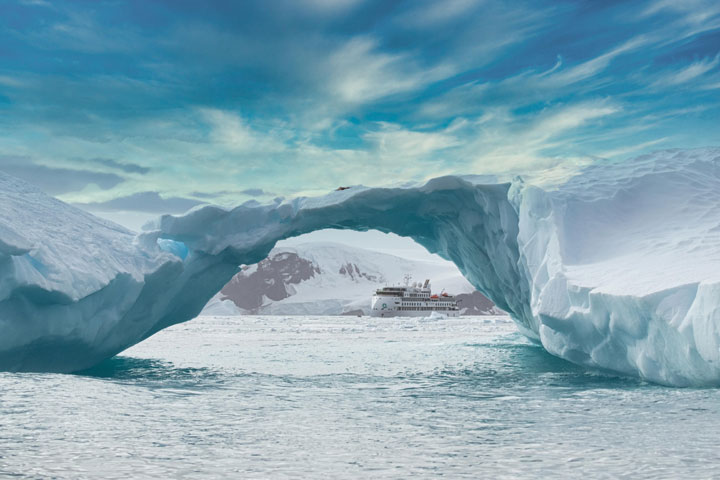
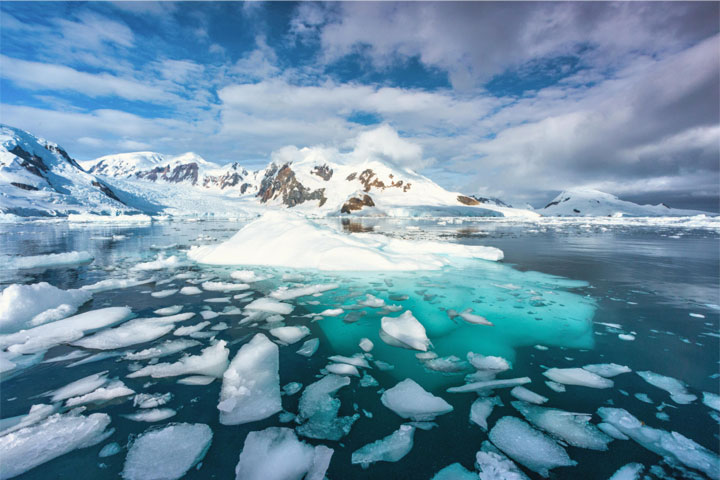
The islands around Antarctica have astonishing beauty as illustrated by these photos of Paradise Harbour, Port Lockroy and Cierva Cove. The mountains crowd the bays. Sea ice and icebergs fill the waters. Occasionally, a whale shows up in a landscape shot too.


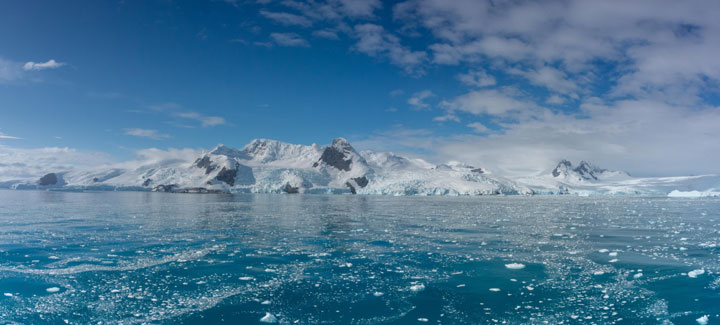
We managed to visit an active volcano called Deception Island (an old whaling station) where there is no snow due to the warmer rocks. The colours of the natural rocks were quite beautiful and demonstrate the diversity within Antarctica.
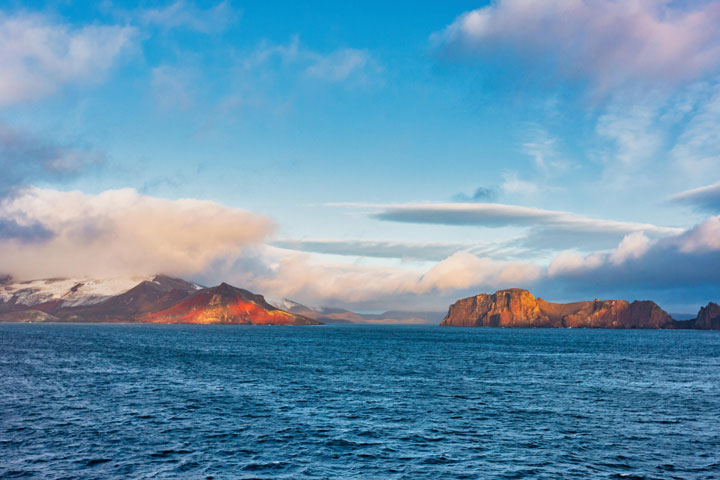
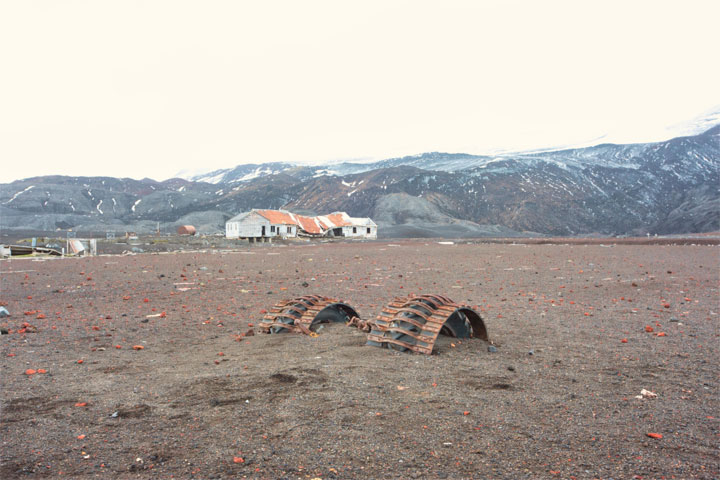
On our last day we explored the vast Antarctic Sound where masses of Icebergs and sea ice float. After a period of time, we identified a suitable pack of sea ice for a landing and all aboard had the opportunity to walk on the sea ice. To no surprise we shared this with penguins and fur seals, admiring an exquisite day full of sunshine and wonderful panoramas .
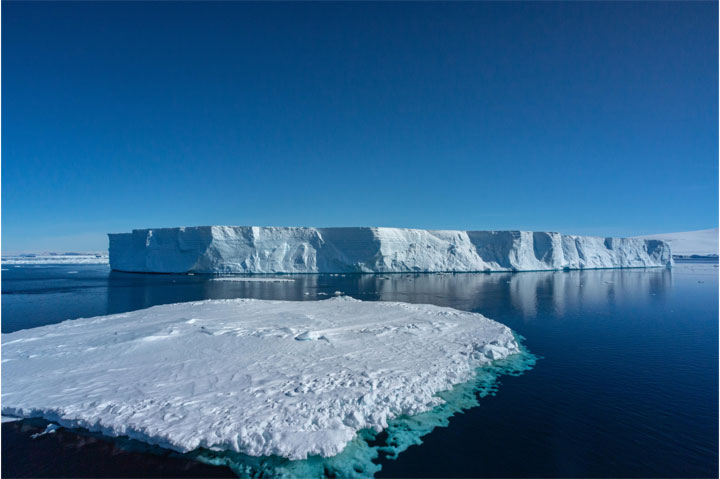
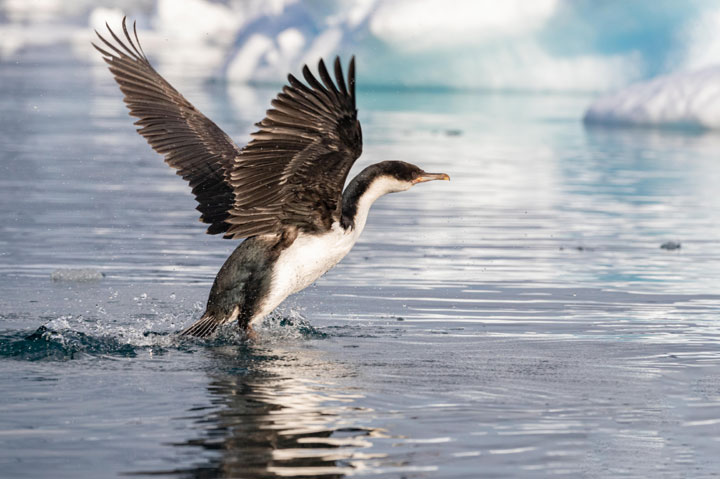
The success of this trip was highly dependent on the expedition leader who uses detailed weather reports to predict the least wind and greatest comfort for the ship and zodiacs. Every day is a wait and see approach and only at the last minute is the itinerary fully understood. I cannot praise the expedition leader and his team enough for making this trip an overwhelming success. More so, at this time of Covid -19, do I realise what a privilege it has been to visit the 7th continent of this magical planet and thank you Aurora Expeditions. Thank you, Antarctica, and thank you the natural environment.
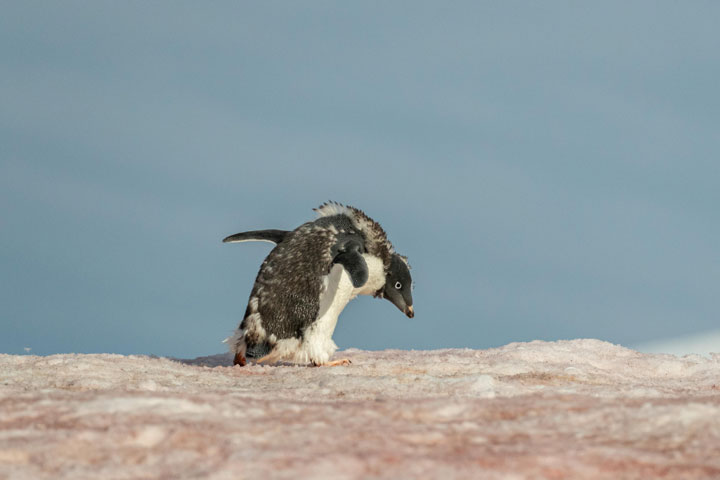
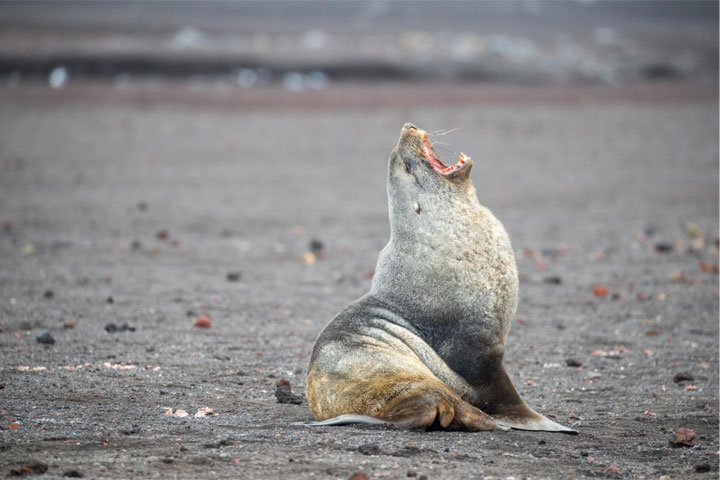
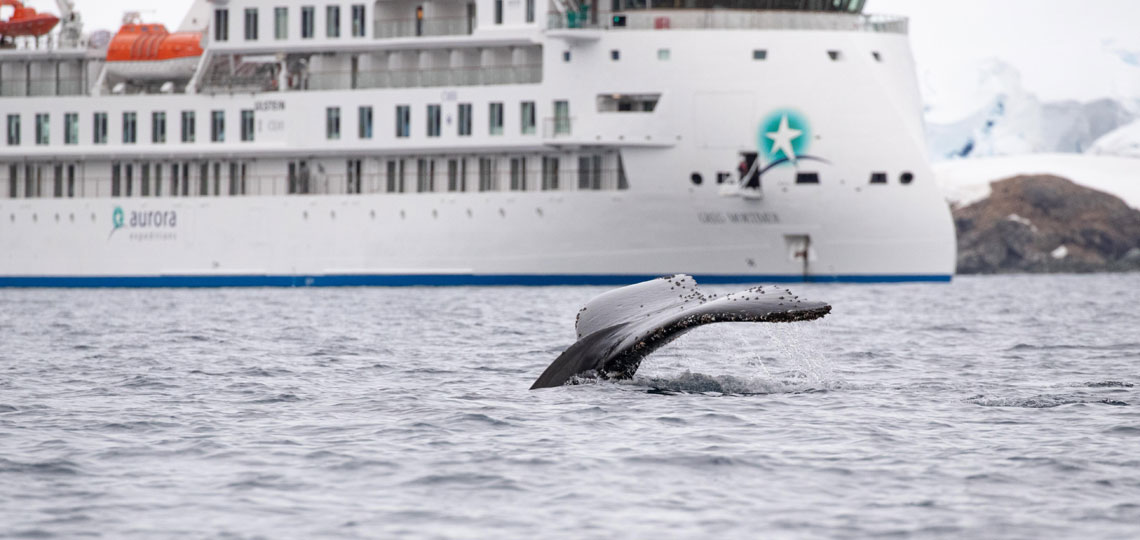
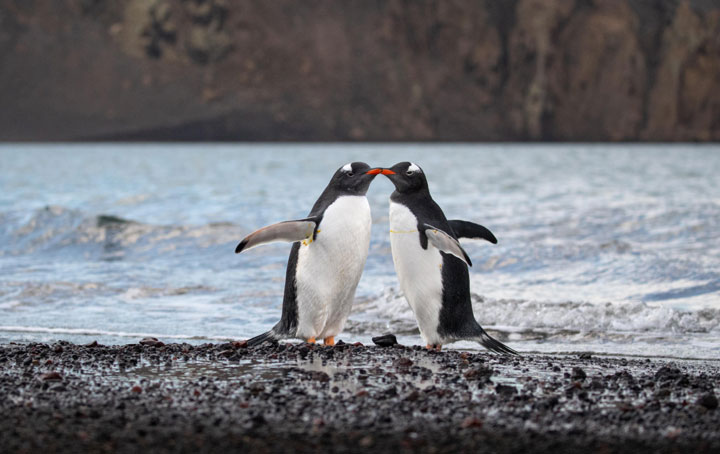
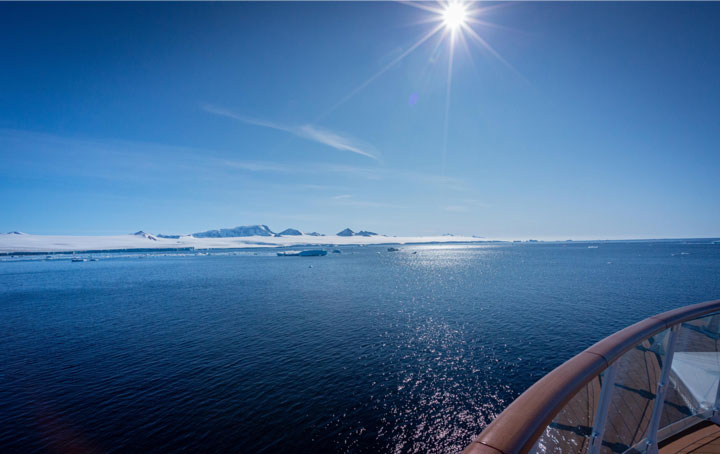
About the author
Brian Harrisberg
Dr Brian Harrisberg is a Sydney based practicing ophthalmologist who specalises in cataract and refractive surgery, and diabetic eye disease. Brian sparked an interest in photography as a young eye doctor, and has since produced some stunning images. With a focus on bird photography, Brian says “Bird photography and bird watching take me to new and wonderful places both literally and figuratively. Editing, posting on social media, and printing the images allow me to re-visit those moments in the bush and share them with the world.”
